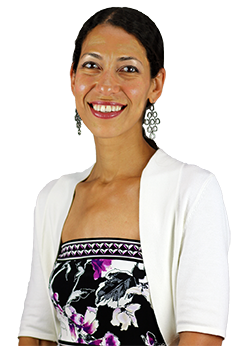Recently, I was browsing my favorite cooking magazine and stumbled upon a recipe that I knew had my name all over it. Then, when I made the dish, I substituted ingredients for those that I either really love or those that I simply had waiting in the fridge to be used. It turned out delicious. Did it look exactly like the picture in the magazine? Not really. But that didn’t matter, since it tasted great, and better yet, I had used those tomatoes that were starting to show their age. That’s all great, but what struck me was that I was finally doing something with my cooking that took me a while to learn — eyeballing. Forgive me, Martha Stewart.
Many times, I’ll forgo a recipe or modify it simply because I don’t have the main ingredient, or I don’t have the kitchen tools that the recipe calls for. That clearly calls for improvisation. Other times, I need to have some sense of how much of an ingredient to use. For instance, I’ll ask my grandmother for advice on her beloved recipes, only to find that she has no quantifiable answer for me. When I was making her apricot jam (which she had perfected over decades to an unimaginable delicious morning treat), she gave me instructions such as: “Drop a spoonful into a bowl, and you’ll know it’s done when it’s thick,” or “Pour a little bit of citric acid into it.” What’s “thick” or “a little”? How big is this spoon? I realize now that cooking is not baking, nor is it akin to being in an organic chemistry lab. It doesn’t have to be so precise. Somehow what you make can still taste great without absolute precision, and over time, with repetition, you can perfect your take on the recipe.
I work with precision all day at the office doing dentistry that calls for accuracy that can make or break a restoration or clinical situation. Reducing “the tooth by a little” obviously doesn’t fly. But subjectivity is not entirely ruled out in our profession, either. For example, 1.0 mm of a root canal filling that is short of its end might be “a lot” for someone calling for a redo, or it would lead another dentist to leave it alone and monitor it.
At the recent AGD Scientific Session in Las Vegas, an excellent speaker was giving us her “recipe” for a procedure. As I frantically wrote detailed notes, I found myself underlining and circling numbers. If she said 20 seconds, that meant a precise 20 seconds. Not 25, not 15. Similarly, if we don’t have a certain bonding agent in the office, we may not be able to use its corresponding cement. No improvisations there.
On the other hand, when the late Dr. Carl Misch was lecturing on implant dentistry, he talked a lot about the “feel” of the bone. That’s not quantifiable. That’s a subjective description. But it can be learned and, better yet, perfected over time, just like my cooking.


Leave a comment